FAQ OF Fly Ash Handling and Utilization Methods - AGICO
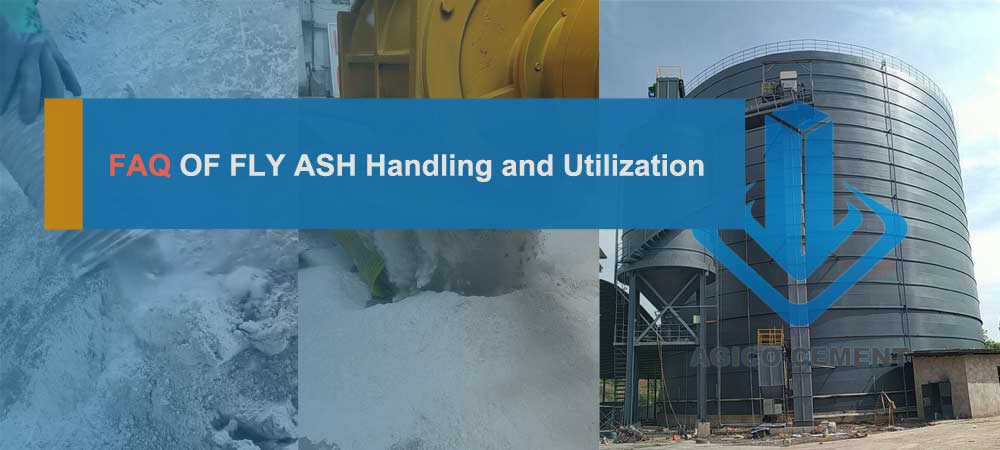
AGICO is a cement plant equipment manufacturer and supplier in China, we offer solutions for fly ash conveying and storage in coal-fired power plants and other industries. Since Fly ash is produced in the above industries, it is also a type of fine granular material with volcanic ash activity that can be used to produce building materials.
Fly ash utilization has significant benefits and important significance in saving natural resources, saving energy, saving land, reducing the harm of waste to the environment, and promoting the development of new building materials. Here are the most frequently asked questions of fly ash and its utilization methods:
What Is Fly Ash And Current Status
Q: What is fly ash made of?
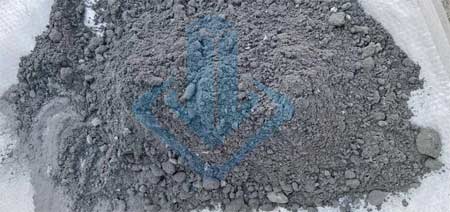
Fly ash is mainly fine ash collected from the flue gas after the combustion of coal in coal-fired power plants. Its main chemical components are SiO₂, Al₂O₃ and Fe₂O₃, and the total amount is usually more than 70%. It also contains a small amount of CaO, MgO, SO₃ and unburned carbon particles.
The main chemical components of waste incineration fly ash are CaO, SiO2, Al2O3, Fe2O3, etc. In addition, incineration fly ash often contains high concentrations of heavy metals such as Hg, Pb, Cd, Cu, Cr and Zn. These heavy metals mainly exist in the form of small aerosol particles and enriched on the surface of fly ash particles. At the same time, incineration fly ash also contains a small amount of organic pollutants such as dioxins and furans.
Q: How is fly ash produced?
 Coal Fired Power Plant
Coal Fired Power Plant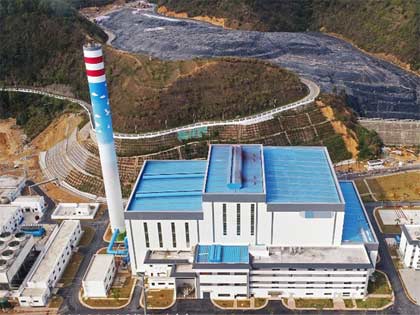 Waste Incineration Plants
Waste Incineration Plants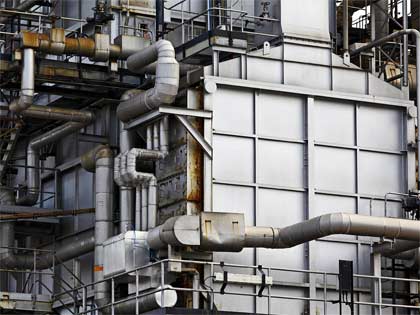 Industrial Boilers
Industrial BoilersFly ash is a fine particle residue left during the combustion process, primarily from coal-fired power plants, waste incineration plants, and industrial boilers. The fine ash captured from the flue gas after coal combustion. It is the primary solid waste discharged from coal-fired power plants. Pulverized coal burns in a suspended state in the furnace, where most of the combustibles in the coal are burned, while a large amount of non-combustible components in the pulverized coal are mixed with the high-temperature flue gas. The high temperature causes them to partially melt, forming a large number of fine spherical particles called fly ash.
Q: What are fly ash and bottom ash?
- Fly ash: Fly ash exists in the flue gases during the incineration process or coal burning. It might contains high levels of heavy metals and hazardous substances which requires special treatment, such as solidification and stabilization.
- Bottom ash: Bottom ash refers to the ash deposited at the furnace bottom. Bottom ash primarily contains inorganic matter and some unburned organic matter.
Q: How much fly ash is produced each year?
Large amounts of fly ash are produced, with global output exceeding a billion tons in 2016. China, India, and the European Union are key producers of fly ash. Global fly ash production is about 2800 million metric tons annually (Assi et al., 2020). Only 53% of the fly ash is currently used, while the rest is either dumped in the ground or stored in ponds and lagoons, causing various environmental issues.
Fly Ash Handling - Collection and Storage
Q: How is fly ash collected?
Core collection equipment: Dust Collector
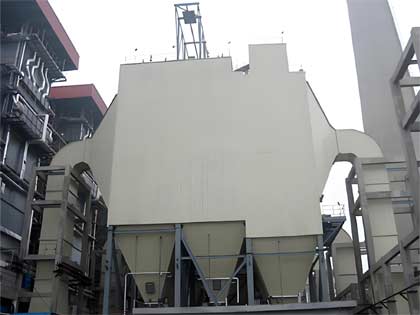
Electrostatic Precipitators
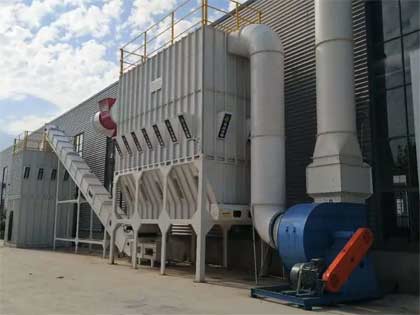
Bag Filter
The high-temperature flue gas generated by coal-fired boilers first passes through the dust collector, which is the most critical step in capturing fly ash.
Electrostatic precipitators (ESPs) use a high-voltage electrostatic field to charge dust particles in the flue gas, which are then captured by electrodes. This is currently one of the most popular methods in large power plants, offering high efficiency and handling large air volumes.
Bag filter: Dust-laden flue gas passes through a fabric filter bag, where dust is trapped on the outer surface of the bag and the purified flue gas is discharged. With the improvement of filter bag materials (such as P84 and PTFE coated filter media), the capture efficiency of fine particles is very high.
Core collection equipment: Flue gas purification system
The flue gas generated by waste incineration passes through the waste heat boiler and then enters a complex flue gas purification system, where fly ash is mainly captured.
Baghouse: This is the core and final piece of equipment for capturing fly ash. As flue gas passes through the baghouse, fly ash particles are trapped by the bag. To effectively absorb dioxins and heavy metals, adsorbents such as activated carbon powder are injected into the flue gas before it enters the baghouse.
Other flue gas treatment equipment: Before the flue gas enters the bag filter, there are usually deacidification towers (for removing acidic gases), denitrification devices (for removing nitrogen oxides), etc.
Q: How is fly ash stored?
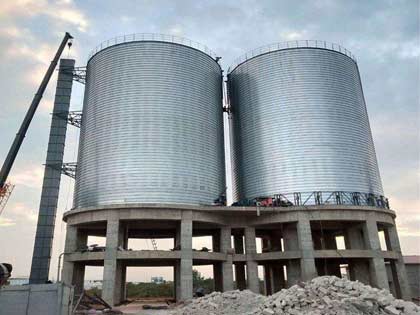
Fly ash is generally considered a general industrial solid waste. Its storage method is oriented towards resource utilization, focusing on preventing dust and leakage, but the requirements are relatively lower than those for hazardous waste.
Large steel ash storage silos (ash silos)
This is the most mainstream and modern storage method. These ash silos are massive, cylindrical, steel-structured, sealed containers with capacities of thousands of cubic meters.
Supporting equipment includes a bag filter on the roof to remove air from the silo during feeding, preventing dust from escaping. A fluidization system or a gasification plate at the bottom of the silo allows compressed air to fluidize the ash, facilitating its smooth discharge through the discharge port.
Waste incineration fly ash is classified as hazardous waste because it contains high concentrations of leachable heavy metals and dioxins and other pollutants. Its storage is subject to extremely strict laws, regulations and standards.
Fly ash storage silo (intermediate temporary storage)
In the incineration plant, the fly ash collected from the dust collector will be first pumped into the fly ash storage silo for short-term storage through a fully enclosed pneumatic conveying system.
This storage silo is also of closed design and equipped with dust removal and monitoring devices.
Q: Where to buy fly ash?
Customer can get fly ash directly from industrial producers and specialized suppliers.
Coal-Fired Power Plants: Many power plants sell fly ash as a byproduct, either directly or through distribution partners.
Cement Manufacturers: Cement plants often supply fly ash as a supplementary cementitious material (SCM) for concrete production.
Industrial Material Suppliers: Companies that specialize in construction additives or industrial byproducts distribute fly ash in bulk or bagged form.
Fly Ash Utilization and Treatment
Q: What are the main uses of fly ash in construction?
The coal fly ash usage accounts for about 35% of the total fly ash utilization. The main technologies include: fly ash cement (dosage of more than 30%), clay as cement raw material, ordinary cement (dosage of less than 30%), silicate load-bearing blocks and small hollow blocks, aerated concrete blocks and boards, sintered expanded clay, sintered bricks, autoclaved bricks, steam-cured bricks, high-strength double-free immersion bricks, double-free bricks, calcium silicon boards, etc.
Construction projects
The amount of ash used in this category accounts for 10% of the total ash usage. The main technologies include: fly ash used in large-volume concrete, pumped concrete, high and low-grade concrete, and grouting materials.
Q: How to separate unburned carbon in fly ash?
Fly ash decarbonization specifically refers to the process of separating and removing unburned carbon particles from fly ash (fly ash from coal-fired power plants). To efficiently utilize fly ash (especially for high-grade cement and high-end concrete), the residual carbon content (loss on ignition) must be reduced to below national standards (e.g., Class I ash requires a loss on ignition of ≤5%) . The low-carbon tailings after carbon selection are high-quality raw materials for the building materials industry. The flotated carbon can be used as fuel for boiler combustion and other fuels.
Q: Can fly ash replace cement in concrete?
Coal fly ash and treated waste incineration fly ash can partially replace cement clinker, reducing cement costs and carbon dioxide emissions at high temperatures. In concrete structures, fly ash increases concrete strength and extends its lifespan. The fly ash replacement ratio in cement production is generally controlled at 5% to 15%, achieving resource utilization without compromising cement product quality.
Q: How does fly ash improve concrete performance?
- Improve the strength of concrete: The active substances in fly ash can react with water to form hardening substances, thereby improving the strength of concrete.
- Improve the crack resistance of concrete: The fineness and adhesion of fly ash can fill the tiny gaps in concrete, thereby improving the density and crack resistance of concrete.
- Improve the durability of concrete: The glass in fly ash can react with the hydrate in concrete to form a colloidal substance, thereby improving the bonding strength and durability of concrete.
- Reduce costs: Fly ash is a by-product, and adding fly ash can reduce the cost of concrete materials.
Q: Can it be used in road and embankment projects ?
Fly ash, a material similar to volcanic ash, can be used as a fine aggregate in asphalt pavements. Extensive testing has demonstrated that the use of fly ash in asphalt concrete can effectively reduce energy consumption and minimize material waste .
This ash usage accounts for 20% of total ash utilization. Key technologies include fly ash and limestone sand stabilization of pavement bases, fly ash asphalt concrete, and fly ash applications in slope protection, embankment construction, and reservoir and dam construction.
Q: Can fly ash be used in agriculture or soil improvement?
Processed slag and fly ash can be used to improve soil physical and chemical properties. The minerals and trace elements in slag and fly ash increase soil fertility and structural stability, promoting plant growth. Through appropriate proportioning and application methods, ash can serve as a soil conditioner, enhancing soil productivity and sustainability.

